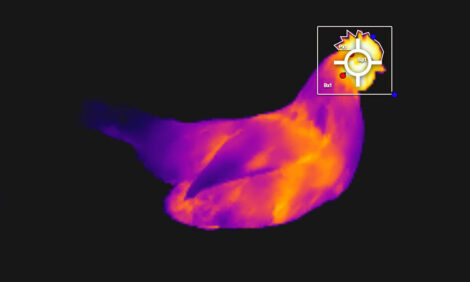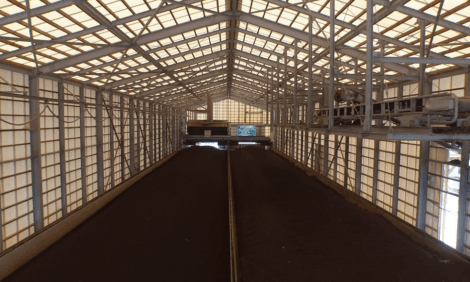



US Poultry Outlook Report - November 2005
By U.S.D.A., Economic Research Service - This article is an extract from the November 2005: Livestock, Dairy and Poultry Outlook Report, highlighting Global Poultry Industry data.
2005 Turkey Production Increases After 2 Years Of Declines
Poultry: Turkey production in 2005 is forecast at 5.5 billion pounds, a small
increase after year-over-year declines in 2003 and 2004. Turkey production
is also expected to increase 1 percent in 2006, largely in response to higher
2005 prices for most turkey products. Fourth-quarter prices of turkeys (8-16
lb, hens, Eastern region) are expected to range between 79 and 81 cents per
pound. Turkey prices for the year will likely be about 73 cents per pound, an
increase of 3 cents from 2004.
Avian Influenza: This special section contains a set of basic background
information to assist readers in navigating general media and industry
discussions of the disease.
2005 Turkey Production Increases After 2 Years of Declines
Overall turkey production for 2005 is forecast at 5.5 billion pounds, a small increase after year-over-year declines in 2003 and 2004. Federally inspected slaughter in the fourth quarter of 2005 is forecast at 1.41 billion pounds, up slightly from the same period in 2004. U.S. turkey production in the third quarter of 2005 was 1.375 billion pounds, down 1.1 percent from the same period in 2004. The decrease in production was due to fewer birds slaughtered (down 3.4 percent) even as the average live weight per bird at slaughter was 27.1 pounds, 2.1 percent higher than in the same period last year. Turkey production is also expected to increase slightly in 2006 in response to higher prices for most turkey products throughout most of 2005.
Third-Quarter Ending Stocks Lower
The third-quarter production decline combined with gains in exports, pulled thirdquarter ending stocks down. Cold storage holdings of whole turkeys at the end of September were estimated at 279 million pounds, down 3.7 percent from a year earlier, and holdings of turkey parts were also lower. Stocks of turkey parts were estimated at 214 million pounds, down 9.6 percent from a year earlier. Total thirdquarter ending stocks for turkey were 494 million pounds, down 33 million pounds (6 percent) from a year earlier.
Turkey Prices Expected To Remain Higher
The combined effects of lower domestic turkey meat production, stronger exports, and falling stock levels have pushed whole turkey prices higher over the past several months. The Eastern region price for whole hens in October was 82.4 cents per pound, up 7 percent (about 5 cents) from a year earlier. Both whole bird and turkey parts prices are expected to remain above their year-earlier levels through the Thanksgiving period then decline seasonally, but remain above year-earlier prices. With continued slow growth in production and higher exports, turkey prices through the first half of 2006 are expected to remain near 2005 levels through the first half of 2006.
Turkey Exports Remain Firm in Third Quarter
Turkey exports totaled 52 million pounds in September, up 11 percent from September 2004. Third-quarter 2005 turkey exports were 147 million pounds, up 10 percent from last year. The increases are largely due to increases in Mexican and Canadian import demand for U.S. turkey meat.
Broiler Production Forecast Higher in Fourth Quarter
U.S. broiler meat production in the third quarter of 2005 was 8.93 billion pounds, 1
percent above a year earlier. The slight growth in production was due to a 0.8-
percent increase in the average liveweight to 5.32 pounds, offsetting a 0.2-percent
decrease in the number of birds slaughtered. Fourth-quarter federally inspected
meat production is forecast at 8.75 billion pounds, 2.5 percent above a year ago.
Increased fourth-quarter production is expected to come from a higher number of
birds slaughtered and higher average weights.
Since the beginning of October, the weekly Broiler Hatchery report
(http://usda.mannlib.cornell.edu/reports/nassr/poultry/pbh-bb/) has shown an
upswing in the year-over-year growth in the number of chicks placed for grow-out.
And, over the last 5 weeks (October 8 through November 5), the number of broiler
chicks placed for grow out has averaged 2.4 percent higher than in the same period
in 2004. The number of eggs placed in incubators for hatching over the last 3
weeks points toward continued strong growth in broiler chick placements, as it has
averaged 3.2 percent higher than a year earlier. The number of chicks being placed
for grow-out is expected to average above last year through the remainder of 2005,
indicating higher production through the first part of 2006. Broiler meat production
for 2006 is forecast at 36.3 billion pounds, up 3.2 percent from 2005.
Third-Quarter Broiler Ending Stocks Lower
The slow growth in broiler meat production and higher exports in third-quarter 2005
compared with the previous year have pushed ending third-quarter stocks of broiler
products below those of a year ago. Broiler stocks held in cold storage at the end of
September were 735 million pounds, down 39 million pounds from the end of thirdquarter
2004. However, the ending stocks for the third quarter were 48 million
pounds higher than at the end of the second quarter, mostly due to higher stocks of
breast meat and wings. These increases in stocks were partially offset by declines
in the cold storage holdings for whole birds, thighs, and thigh meat.
An increase in the percentage of broilers in the highest weight class (averaging
around 6.35 pounds over the past several weeks) has increased the total proportion
of broilers being cut up for parts. This in turn has put downward pressure on prices
of such cuts as boneless/skinless breasts. October 2005 prices in the Northeast
market for boneless/skinless breast meat were $1.17 per pound, down 10 percent
from a year earlier and down nearly 24 cents per pound since July. With a strong
export market, prices for leg quarters averaged nearly 46 cents per pound in
October, an increase of over 50 percent from a year ago. However, over the last
several weeks, prices for leg quarters have declined as the spread of AI to countries
such as Turkey and Romania has created uncertainties about the strength of future
exports to such areas as Eastern Europe, the Middle East, and Central Asia.
Broiler Exports Up in Third Quarter
Although broiler exports for September 2005 were down 21 percent from September of last year, third-quarter 2005 broiler exports were 1.315 billion pounds, up 4 percent from the same period last year. The reduction in U.S. broiler exports in September was largely attributable to interruptions in exports to Russia, due to the effects of hurricane Katrina. Because of the damage to gulf port facilities, Russia required port facility re-inspection before U.S. poultry exports to Russia could resume. Hurricane damage to gulf port facilities, plus hurricanerelated regional transportation difficulties, caused U.S. broiler exports to fall by 65 percent from August to September.
Avian Influenza: Basic Background and Definitions
There are three basic types of influenzas that impact humans: A, B, and C. Types
B and C are normally found only in humans, and type C influenzas are usually mild.
Type A influenzas are found in a number of species, including humans, and are the
most likely to cause severe human health problems.
Avian influenza (AI) is caused by a Type A influenza virus. AI ranges from a
mild, or even asymptomatic infection, to an acute, fatal disease of chickens, turkeys,
guinea fowls, and other avian species, especially migratory waterfowl. The AI
viruses are also classified into low pathogenic and highly pathogenic forms based
on the severity of the illness they cause in poultry.
Type A influenzas are identified according to two different surface proteins,
hemagglutinin (H) and neuraminidase (N), which have 16 (H1 – H16) and 9 (N1 –
N9) subtypes respectively. The AI strain called H5N1 has been the focus of recent
attention. It is often a high pathogenic form of AI that can cause massive flock
losses. And, this strain of AI has been found to be deadly to a number of other
species besides birds. Wild birds, especially wild waterfowl, can act as a reservoir
for the disease, spreading it along their migration routes. Finally, this form of AI
can be transmitted to humans under certain conditions.
During late 2003 and early 2004, outbreaks of highly pathogenic avian influenza
A (H5N1) occurred among poultry in eight countries in Asia: Cambodia, China,
Indonesia, Japan, Laos, South Korea, Thailand, and Vietnam. At that time, more
than 100 million birds either died from the disease or were destroyed in an attempt
to prevent further spread of the disease.
From mid-2004 to the present, H5N1 outbreaks in poultry continue to spread.
Through October 28, 2005, the World Health Organization (WHO) reported H5N1
outbreaks in China, Indonesia, Thailand, Vietnam, Malaysia, Russia, Kazakhstan,
Turkey, Romania, and Greece. The Ministry of Agriculture of Indonesia states that
as of March 2005, over 16 million birds had died or were slaughtered in that
country’s current outbreak.
The WHO reports that human cases of H5N1 have occurred in Cambodia,
Indonesia, Thailand, and Vietnam. The infection carries a high mortality rate.
The impact of an AI outbreak depends on the specific situation of the country
where it occurs. Poultry production may fall because of bird mortality from the
disease and culling flocks for containment purposes. Other factors may include:
extent and duration of the outbreak, trade disruptions, public reaction, and changes
in domestic consumption.
The United States has not had a major outbreak of highly pathogenic avian
influenza since 1986. In 2004, however, USDA’s Animal and Plant Health
Inspection Service detected and successfully contained a localized highly
pathogenic H5N2 outbreak in one poultry flock in Texas.
Links
For more information view the full Livestock, Dairy and Poultry Outlook - November 2005 (pdf)Source: Livestock, Dairy and Poultry Outlook - U.S. Department of Agriculture, Economic Research Service - November 2005








